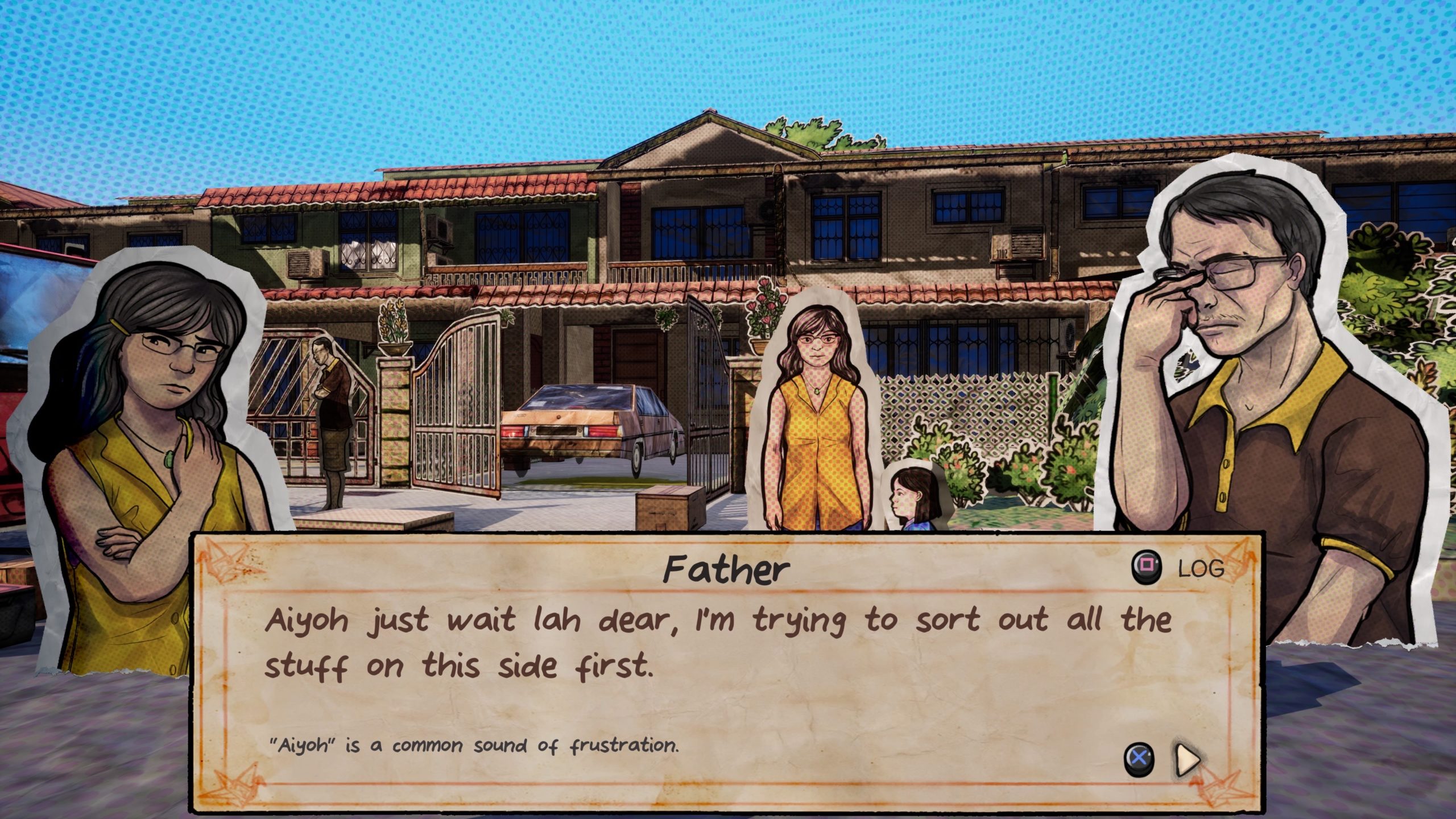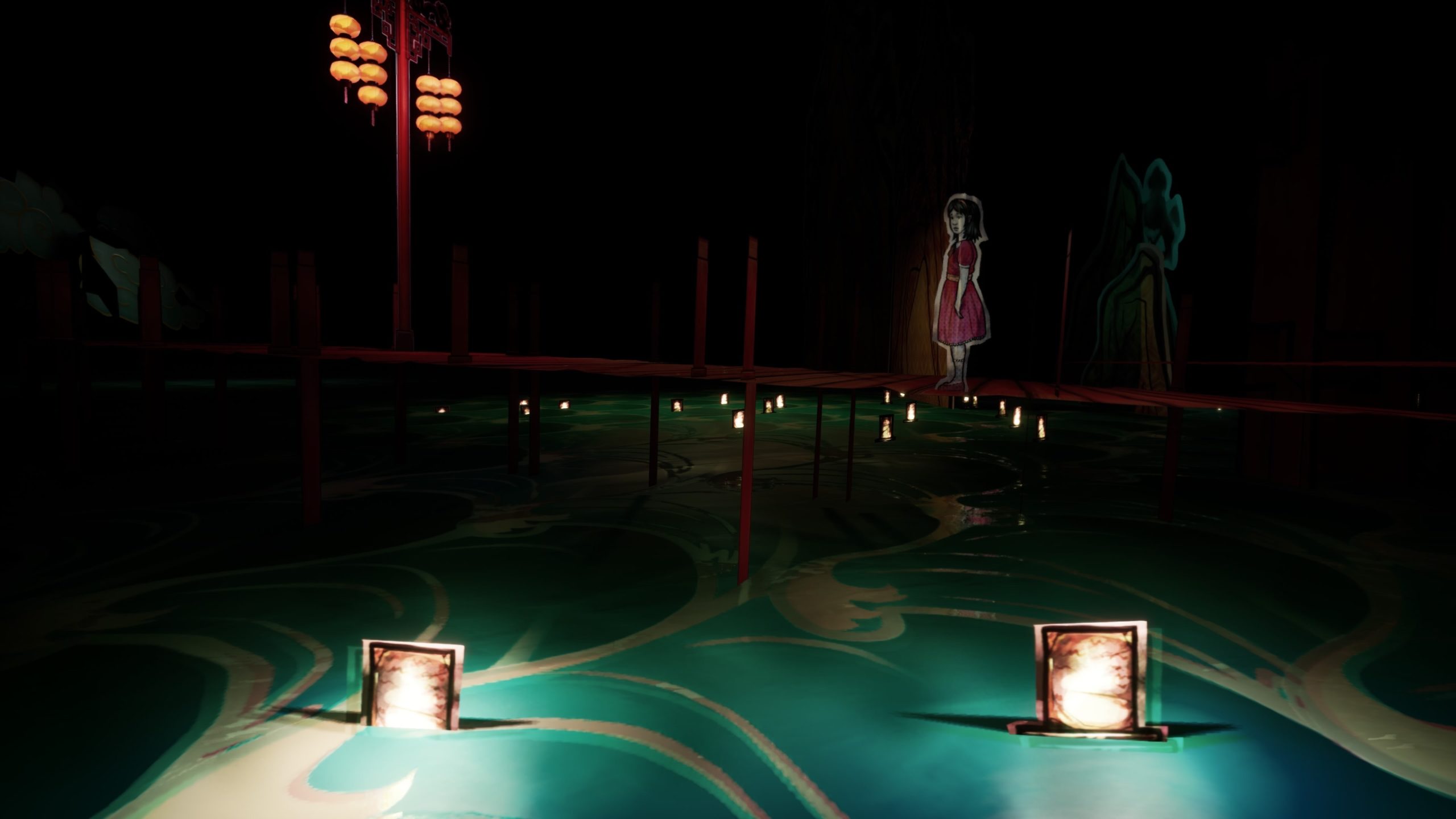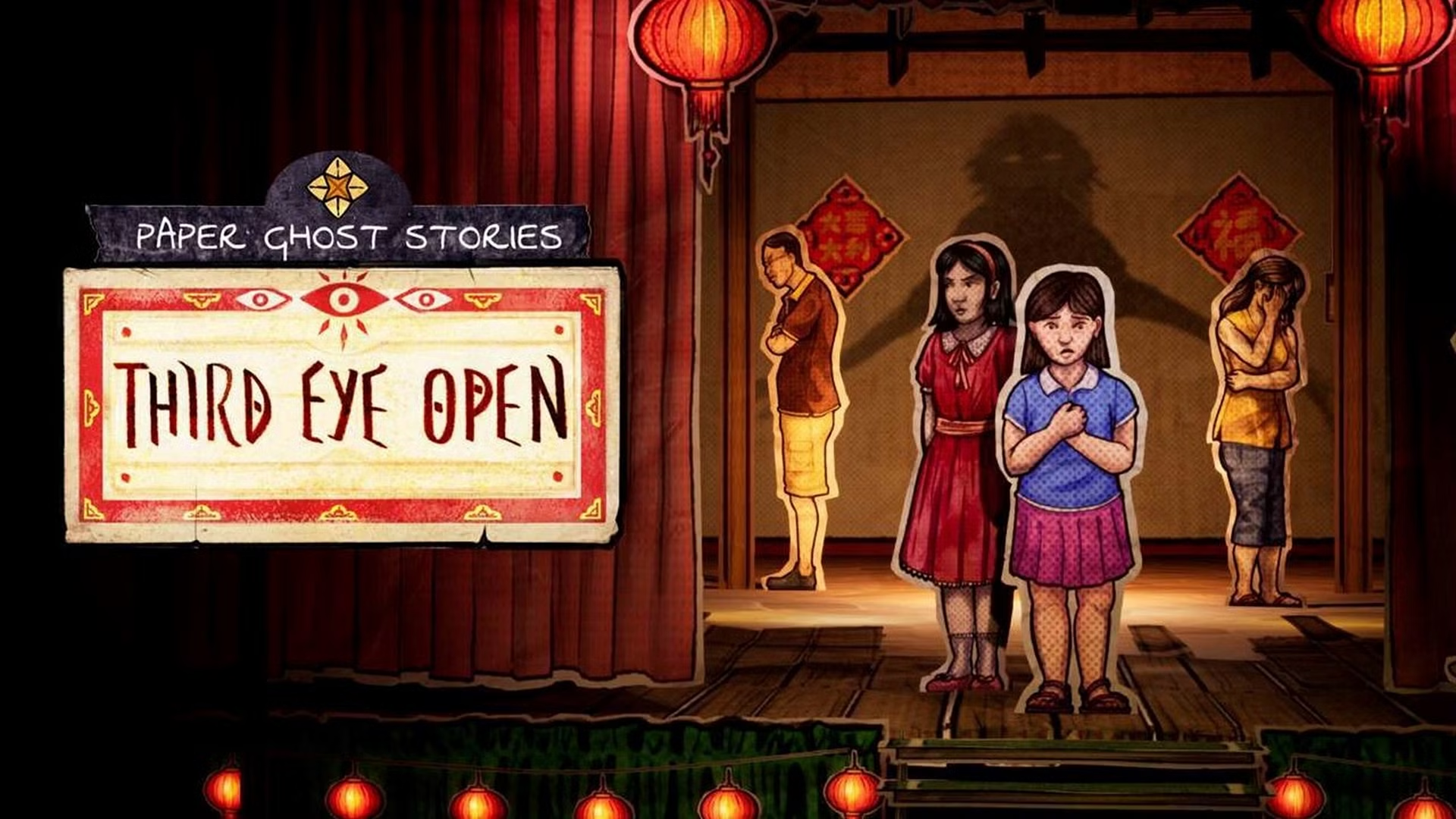The immediate aspect of Paper Ghost Stories: Third Eye Open that grabbed my attention was undoubtedly its art style. Boasting a storybook aesthetic similar to Paper Mario, but maybe if it was Luigi’s Mansion instead; or the more thematically similar but less so visually Yomiwari series. And because of those gaming cornerstones, I thought I’d give Third Eye Open a shot.
Paper Ghost Stories: Third Eye Open is the sequel to Cellar Vault Games’ 2020 outing, Paper Ghost Stories: 7PM. You wouldn’t have to have played the original but neatly enough it’s packaged with Third Eye Open for you to experience both stories. The Malaysian-based studio are bringing their heritage to the forefront here, as the game is steeped in Malaysian and Chinese myths and culture, whilst diving head first into a story about the struggles of growing up in a not-so-perfect family.
I’m an easy target for horror-adjacent folklore in my games, especially from countries I’ve not learned about prior. Yomiwari: Lost in the Dark was a perfect example of this, especially from a childlike lens. So for the opportunity to experience something similar with Paper Ghost Stories — with some authentic representation — I was all in on Third Eye Open.
But with some misdirected expectations on my part and maybe some identity struggles in the gameplay, I wasn’t as excited over it by the time credits rolled. With that said, this’ll land more for those who like to engross themselves in the slower, more tender aspects of a story and maybe those who like their scares on the tamer side. There’s more than meets the third eye here and I’m going to be open about its strengths and weaknesses — whilst pointing out my own weakness in that transition. Shall we?
Are You Afraid Of The Dark?
Third Eye Open follows the story of Ting, a young girl who’s recently moved to a Malaysian suburb in the mid-00s. As she tries to ingratiate herself with the neighbours, one of them looks strangely out of time. Her name is Xiu, who is of similar age to Ting, but is also a ghost who no one else can see. This sparks the journey where we play through multiple years of Ting’s life, as she tries to come to terms with everything surrounding growing up — as well as being able to speak to the dead.
Outside of Ting’s revelation with Xiu in the opening moments, the story slows to an immediate crawl. Instead of doubling down on the ghost aspect of the narrative, I was met with a ton of vernacular world-building. This is mostly done through the dialogue, as all the characters speak English with some Malaysian phrases sprinkled in organically. You’re not lost on what characters are saying either as the game succinctly details the meaning of each phrase at the bottom of every text box.
It’s a feature I found incredibly endearing and a perfect way to help people who don’t know the culture quickly feel at home. Outside of the dialogue, there are specific story beats based on food, culture, or events and they are not afraid to take their time to teach you about it. I would make skewers for a bunch of people, or make lotus root soup at home; or later on celebrate Chinese New Year with the family, calling all my elders Uncle and Aunty. This was all cosy and interesting but dipped a little too much in the slice-of-life genre pool for what I thought was going to be a game full of spooks.

The Life Of A Ghost Whisperer
This bleeds into the gameplay too as it presents an uneven use of mechanics throughout my 8-hour playtime. The game is very dialogue-heavy, to the point where I felt like Third Eye Open would work in its favour to be a visual novel. However, with its interesting art style and implementation, you’d miss out on the minimal exploration you get to do in between conversations.
When you’re in control of Ting’s movements, you play in a 2.5D space. Objects and characters are 2D whilst the environments they inhabit are 3D with a dynamic camera angle that moves on its own to show the best perspective depending on your position. During these moments you’re normally doing something very everyday.
Think: chores, fetch quests etc. It all gets in the way of forwarding the story and feels like it’s padding to justify its existence as a partial adventure game outside of the visual novel amount of dialogue. And then you have bespoke minigames that cater to that slice-of-life aspect I mentioned earlier i.e. cooking, playing marbles with the neighbours, making origami.
All of which get in the way of what I’m interested in the most, which is the story. It perfectly encapsulates childhood but I was also bored for at least half of the game as a result. Ting has a few brushes with ghosts as you navigate the chapters, culminating in a thrilling final act but the 6-hour build-up to it didn’t warrant the payoff.
I See Dead People
This could be down to my aforementioned misdirected expectation but the trailer honestly shows the best bits. The dialogue can be incredibly cloying at times too. Maybe an unfair feeling given I’m playing as a young child, but I do feel it’s doing very hastily interpretations of what an adult thinks a child talks like, more than what they actually talk like.
That aside, there’s a really heartfelt subtext of navigating growing up with strict and unforgiving parents. It’s relatable and feels personable to the team behind the story. When I stopped thinking of Third Eye Open as being a spookfest, and more of a game dealing with familial struggle, with a touch of paranormal, I began to resonate with the game more.
But that’s not to say there’s not some spooky stuff, albeit very docile. Whether that’s a camping trip that results in a reluctant jaunt into the forest at night, or a venture to the haunted house at the end of the street, the game provides yet another mechanical difference. In a handful of instances, you’ll be expected to navigate areas without getting seen.
This is showcased as characters having an eye icon next to them that would show open, closed, as well as its direction. It’s very basic stuff but it does just enough to feel more tense than picking up rubbish in the park. It’s also these moments that give you a couple of puzzles to solve too. This usually results in finding an item for the right place at the right time: like a hammer to break some boards, but you had to talk to a few people to get to that conclusion. Again, simple stuff but still my highlights.

Crossing That Bridge
My only issue with these said moments is the camera. It moves along with you, often cutting off what’s in front of you if you’re walking towards the screen. This results in a couple of instances where I couldn’t see what I was supposed to be hiding from and getting caught. Had this been more of the game I’d have a bigger issue but they’re so few and far between.
This is a persistent problem throughout the game but only the sneaking moments have stakes of failure, so it’s not always causing trouble — just be prepared for some awkward camera angles as you play. I think Cellar Vault Games made the best out of a difficult camera situation, because if the game was purely 2D, I think it would have lost some of its distinction. The prequel 7PM is a precursor to a lot of ideas in Third Eye Open and feels like a massive improvement between their first a second Paper Ghost Stories.
Both of which have this great art style inspired by Southeast Asian Joss-papercraft, creating intricate paper sculpts for everything in the game. Given the art style and the setting, it feels like one big ode to the developer’s roots and I loved everything about that. It’s also accompanied by a serene soundtrack of piano balladry, acoustic guitars and the like. I can only describe it as Ghibli-esque with what it captures for me.
Overall, Third Eye Open isn’t the easiest to recommend: it’s slow, not very scary, has a melting pot of gameplay ideas that don’t mesh too well. But on the other hand, I really adored the world-building, its efforts in taking time out to introduce you to Malaysia and the bittersweet and tender story. I just wish it committed to being one thing, instead of everything at once.
Paper Ghost Stories: Third Eye Open is available now on PlayStation 5 (review platform), PlayStation 4, Xbox One, Nintendo Switch and PC via Steam.
Developer: Cellar Vault Games
Publisher: Chorus Worldwide
Disclaimer: In order to complete this review, we were provided with a promotional copy of the game. For our full review policy, please go here.
If you enjoyed this article or any more of our content, please consider our Patreon.
Make sure to follow Finger Guns on our social channels –Twitter, Facebook, Twitch, Spotify or Apple Podcasts – to keep up to date on our news, reviews and features.
